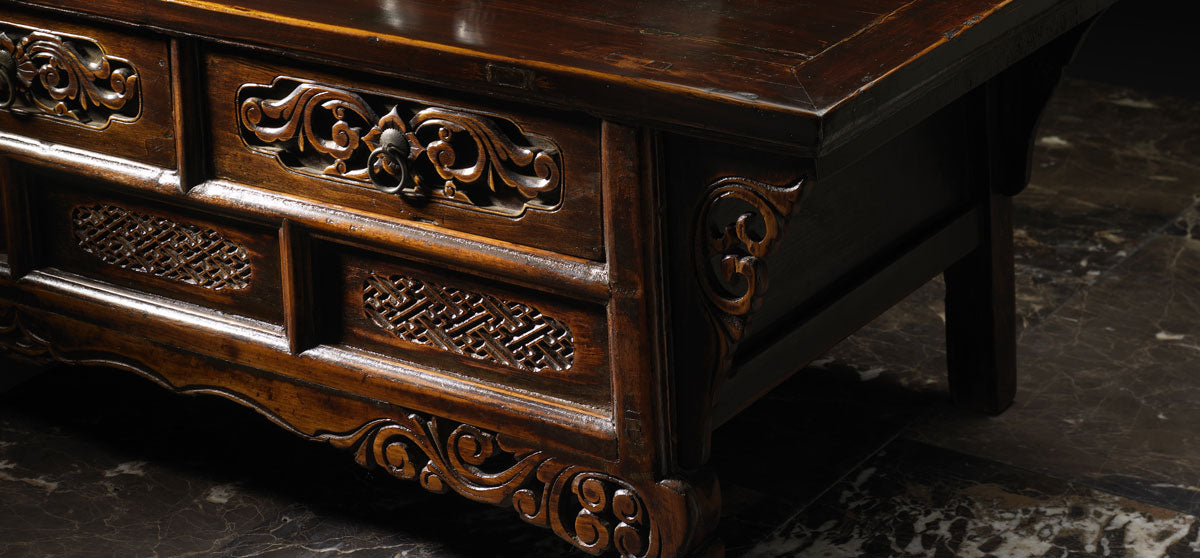
Preview of a gorgeous elm coffer
We source most of our Chinese antique furniture through suppliers in Beijing as we find that in general the selection and quality there tends to be better. However there are also dozens of antique warehouses in Shanghai, where most of our reproduction furniture is produced, so where time allows it is always good to check one or two of these out when I am visiting.
On my last trip to Shanghai I went with Mr Zhang, the owner of our main reproduction workshop, to a warehouse hidden away in the outskirts of the city. This particular warehouse gathers antiques from all around China and sells them on in an unrestored condition to other workshops in Shanghai, who then restore the furniture before selling to private customers or for export. The nice thing about this type of warehouse is that you can see pieces ‘in the raw’, with all their faults and original finish, making it easy to sort out the higher quality pieces from the lower end.
Mr Zhang originally started his working life as an antique restorer and he has an excellent eye for quality, so with his nods of approval I selected a number of smaller accessories to ship with our upcoming container of reproduction furniture, as well as a few particularly striking antiques. Each of these was in excellent condition with original hardware, paintings and lacquer still intact. They were then transported to Mr Zhang’s workshop for some minimal restoration – effectively just cleaning and polishing, and weeks later they have finally arrived in the UK. We have been photographing these pieces this week so they will be up on our website very soon, but I thought I would offer a sneak preview and some more information about my favourite piece – a truly stunning low kang table from Shanxi province in north central China, dating from the beginning of the 20th century.

In the colder northern parts of China such as Shanxi province, homes would include a brick or earth platform in the central living area, heated from below. Known as a ‘kang’ this was the centre for everyday activities, with members of the household sitting or reclining directly on it rather than using seating. Various types of low level furniture were developed to use on the kang, including tables like this one. This particular design, with three drawers aligned next to each other, is referred to in Chinese as ‘lian san’ and the piece would have doubled as a coffer for storing household items as well as being used as a table – possibly for serving food or as an altar.
Coffers included secret storage areas, accessible only by removing the drawers above. This particular one is a wonderful example of the style, although in this case the space below the drawers is not used, with the four lower carved panels being only a facade. The open carving on the lower apron is superbly worked and continues to the front feet, which are adorned with a scrolling motif. The relief carving on the three drawers is in a common interlocking leaf design, while the four lower panels are carved with recurring swastikas, a buddhist symbol for eternity and long life. The dark elm wood is a little worn in places but the piece is in superb condition and would grace any modern reception room as a large coffee table.
This and the other pieces that I sourced on my last visit to Shanghai, including an unusual painted sideboard also from Shanxi and a beautiful painted chest from Gansu, will be up on our website in the next couple of weeks. If you would like any further details of these then give me a call or contact me through the Shimu website. We are also already starting to line up our next shipment of antiques from Beijing so I hope to have some more pieces available to view soon.





Leave a comment